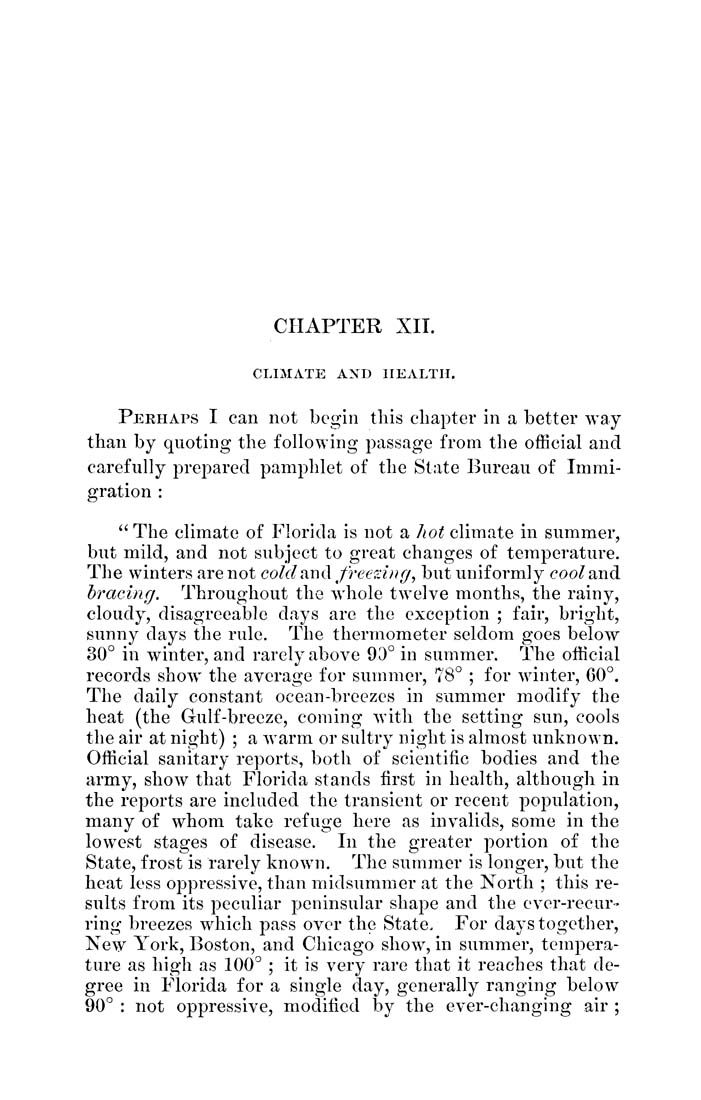CHAPTER XII.
CLIMATE AND HEALTH.
Perhaps I can not begin this chapter in a better way
than by quoting the following passage from the official and
carefully prepared pamphlet of the State Bureau of Immi¬
gration :
" The climate of Florida is not a hot climate in summer,
but mild, and not subject to great changes of temperature.
The winters are not co/c? and freezing^ but uniformly coo^ and
bracing. Throughout the whole twelve months, the rainy,
cloudy, disagreeable days are the exception ; fair, bright,
sunny days the rule. The thermometer seldom goes below
30° in winter, and rarely above 90° in summer. The official
records show^ the average for summer, 78° ; for winter, 60°.
The daily constant ocean-breezes in summer modify the
heat (the Gulf-breeze, coming with the setting sun, cools
the air at night) ; a warm or sultry night is almost unknown.
Official sanitary reports, both of scientific bodies and the
army, show that Florida stands first in health, although in
the reports are included the transient or recent population,
many of whom take refuge here as invalids, some in the
lowest stages of disease. In the greater portion of the
State, frost is rarely known. The summer is longer, but the
heat less oppressive, than midsummer at the North ; this re¬
sults from its peculiar peninsular shape and the ever-recur¬
ring breezes which pass over the State. For days together.
New York, Boston, and Chicago sliow^ in summer, tempera¬
ture as high as 100° ; it is very rare that it reaches that de¬
gree in Florida for a single day, generally ranging below
90° : not oppressive, modified by the ever-changing air ;
|








